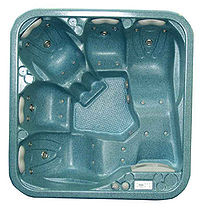Air Injection Systems
Jump to navigation
Jump to search
An air injection system forces fresh air into the exhaust ports of the engine to reduce HC and CO emissions. The exhaust gases leaving an engine can contain unburned and partially burned fuel. Oxygen from the air injection system causes this fuel to continue to burn. The major parts of the system are the air pump, the diverter valve, the air distribution manifold, and the air check valve.
Parts of the System
- The AIR PUMP is belt-driven and forces air at low pressure into the system. A hose is connected to the output of the diverter valve.
- The DIVERTER VALVE keeps air from entering the exhaust system during deceleration. This prevents backfiring in the exhaust system. Also, the diverter valve limits maximum system air pressure when needed, releasing excessive pressure through a silencer or a muffler.
- AIR DISTRIBUTION MANIFOLD directs a stream of fresh air toward each engine exhaust valve. Fittings on the air distribution manifold screw into a threaded hole in the exhaust manifold or cylinder head.
- AIR CHECK VALVE is usually located in the line between the diverter valve and the air distribution manifold. It keeps exhaust gases from entering the air injection system.
Basic operations
- When the engine is running, the spinning vanes of the air pump force air into the diverter valve. If not decelerating, the air is forced through the diverter valve, the check valve, the air injection manifold, and into the engine. The fresh air blows on the exhaust valves.
- During periods of deceleration, the diverter valve blocks air flow into the engine exhaust manifold. This prevents a possible backfire that could damage the exhaust system of the vehicle. When needed, the diverter valve will release excess pressure in the system.
Related Videos
